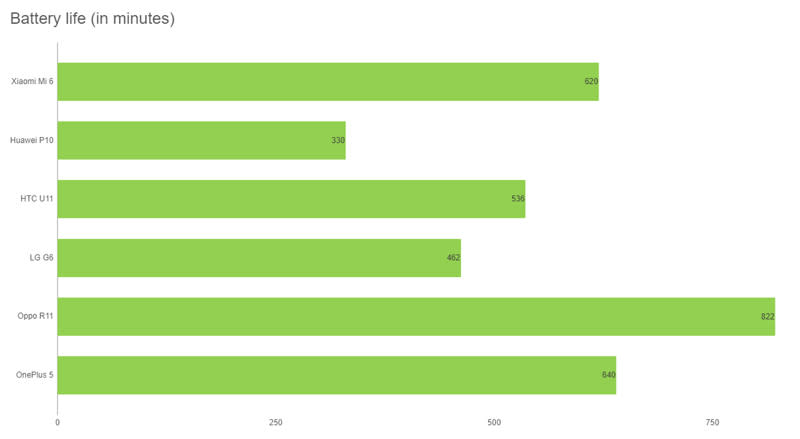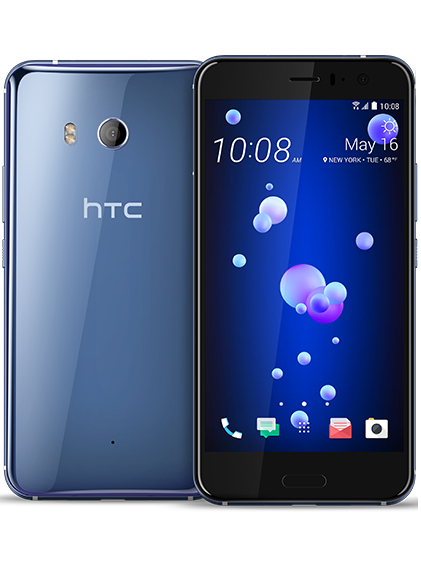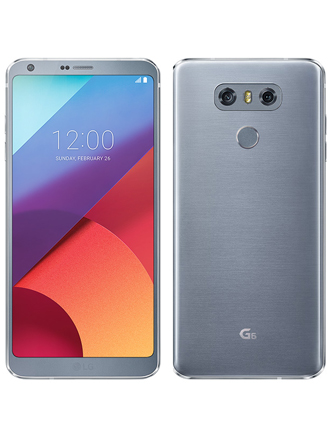Xiaomi Mi 6 review: Flagship hardware with a mainstream price tag
Overview
When the Xiaomi Mi 6 first launched in April, it made a huge splash. Initially, it was one of the first phones (after the Sony Xperia XZ Premium) and the first Chinese smartphone to have the Qualcomm Snapdragon 835, a flagship-tier processor that was once scarce in availability. Xiaomi’s announcement also came during a bland season for phones in general, as some of its rivals were releasing 'flagship-tier' devices touting an outdated top-end processor (Qualcomm Snapdragon 820).
Four months on, the phone is officially available in our local Mi stores, Challenger’s online and offline stores, Singtel, and M1. Again, it made its mark, but by being the lowest priced Qualcomm Snapdragon 835 phone officially available in Singapore at S$599 (64GB). The current climate also sees a slew of comparable flagship devices with a chipset identical to the Mi 6, making the competition more balanced and exciting all at once.
Features-wise, the phone can't compete with a Galaxy S/Note series or the iPhone, but Xiaomi makes it up with some cool things, like a dual rear camera setup with Portrait Mode and a water-resistant body.
The Chinese firm feels that they’re on the right track with their phones, too. According to their reports, Xiaomi’s Q2 2017 shipment volume performance saw a personal record of 23.16 million smartphones shipped in a single quarter. IDC confirms it (although their research showed a lower total at 21.2 million), and it places Xiaomi fifth – with Samsung, Apple, Huawei, and Oppo seeing higher shipment numbers in the same quarter.
Is Xiaomi on track for excellence-on-a-budget? Can the Mi 6 hold its ground against other rivals? Let’s find out.
| |
| |
| |
| |
| |
| |
| |
| |
| |
| |
| |
|
Design & Handling

At its announcement conference, Xiaomi took extra effort to highlight the Mi 6’s build quality and design language. They claimed that the biggest design advancement was the "four-sided curved glass" appearance. Specifically, the glass rear curves down on both sides of a corner, as opposed to having the glass curve towards the rim on a single side. This gives the phone its unique rounded corners.


The Mi 6 uses stainless steel for its body, which, according to Xiaomi, was made possible with the help of their partners. The body itself is splash-resistant, which is a nice touch and unexpected for sub-S$1,000 devices. In the front, the chin features a fingerprint slate that doubles as a Home Button, and soft Android keys flanking it. It’s a familiar design with average handling, but it’s not groundbreaking. Since it uses an everyday look, the ergonomics of the phone are equally straightforward – its’ small 145.17 x 70.49 x 7.45mm body makes it entirely possible to navigate most of the phone with just one hand.

We find that the rest of the Mi 6 resembles your typical iPhone. While it doesn’t win any points for originality in design, having the Mi 6 associated with premium phones would certainly raise its standing despite its asking price. Design preferences aside, It’s a lovely phone for S$599, complete with a flagship-tier build quality and equally premium set of materials used.
Display & Audio

The Mi 6 has a 5.15-inch, Full HD (1,920 x 1,080 pixels resolution) IPS display with a maximum brightness of 600-nits. The MIUI platform offers a bunch of display optimization settings that cater to your needs – Sunlight Mode cranks up the brightness when you’re using the phone under the sun, while Night Mode keeps things dim. There’s also Reading Mode, Color Temperature adjustment, and Standard Mode.
From our test image, we can tell that the Mi 6 offers great clarity and sharpness, with balanced colorization. It doesn’t have the vibrancy offered by AMOLED screens, but it’s still accurate and pleasant to the eye. Detail quality seems average – the patterns and nuances in the hot air balloons are well-rendered, but it doesn’t quite offer the same detail quality when you check out the grassy knoll beneath.

Peering at the bottom of the device revealed its biggest flaw - it's missing a 3.5mm audio port; in its place is a microphone (left) and speaker (right) flanking the USB Type-C port. It’s fine if an affordable phone is missing some pretty features, but a missing 3.5mm isn’t the best idea since it’s still so widely adopted across Android devices. You could rely on Bluetooth 5.0, but that would mean constant pairing and flipping through menus for different playback apps with no plug-and-play alternative. Wireless headphones from recognized brands don’t come cheap either, so if you don't already have one, you are looking at paying from a fifth to double of the Mi 6’s asking price just to plug that gap.
Yes, you could try using a USB Type-C headphone, but that’s another can of worms since USB Type-C transmits digital audio signals while a 3.5mm jack offers analog sound – and that’s not even touching on depriving a charging port for wired audio.
On the other hand, the dual stereo speakers are a nice touch if you like blasting songs; the second speaker also doubles as the call speaker, located at the top, next to the front camera.
Features & UI

Your Xiaomi Mi 6 should ship with MIUI 8 and Android 7.1 OS (Nougat) with its full set of Google services. Since we’re using a set with its Chinese ROM, we had to flash the Mi 6 to a global MIUI 7 firmware for Google Play and the likes (of course, with Xiaomi’s permission and official approval). Despite the different MIUI versions, the experience remains largely the same (save for some design and layout differences), and it still runs on the same Android base version. The new MIUI doesn’t add the much-needed app drawer for app management either.

Many of its other features like its water-resistance body, high-quality display, dual rear cameras, and top-end processor are highlighted in other sections. It’s not that the Mi 6 lacks the bells and whistles that prop up a typical flagship device, but instead, it relies on bringing flagship specifications to the table at a much more palatable price point. It’s pretty much a no-nonsense handset if you’re already familiar with Android 7.1 OS and MIUI as a whole.
Benchmark Performance
The Xiaomi Mi 6 uses a Qualcomm Snapdragon 835 chipset, a current-generation, flagship-performance processor. 2017 flagship devices like HTC U11, Sony Xperia XZ Premium, OnePlus 5, and Samsung Galaxy Note8 use an identical (if not its equivalent) processor. All Mi 6 variants come with 6GB RAM (LPDDR4x), but only the 64GB variant is officially available in Singapore.
Our 128GB set from China should report higher benchmarks, but it’s negligible since our benchmark isn’t pegged strictly to storage performance (as a rule of thumb, bigger capacities performance better for storage-related benchmarks). There are virtually no other differences between both 64GB and 128GB variants, so the local 64GB set should almost be on par with what’s seen here. Quadrant seems to have some technical issues as it’s not accepting (or displaying) our score, so we’ll have to leave it out of the benchmarks for the time being.
|
|
|
|
|
| |
|
|
|
|
|
| |
|
|
|
|
|
| |
|
|
|
|
|
| |
|
|
|
|
|
| |
|
|
|
|
|
| |
|
|
|
|
|
| |
|
|
|
|
|
| |
|
|
|
|
|
| |
|
|
|
|
|
| |
|
|
|
|
|
| |
|
|
|
|
|
|
Sunspider Javascript
SunSpider JavaScript measures the browsing performance of a device when processing JavaScript. It not only takes into consideration the underlying hardware performance but also assesses how optimized a particular platform is at delivering a high-speed web browsing experience. Mi 6’s performance may seem slightly out of place, but it performs better than the OnePlus 5.

3DMark Sling Shot
3DMark Sling Shot is an advanced 3D graphics benchmark that tests the full range of OpenGL ES 3.1 and ES 3.0 API features including multiple render targets, instanced rendering, uniform buffers and transform feedback. The test also includes dramatic volumetric lighting and post-processing effects. We're running this benchmark in Unlimited mode, which ignores screen resolutions. Our Oppo R11 benchmark came from 3DMark's official website since we previously tested it with the Ice Storm Unlimited benchmark instead.

While it’s a close fight, the Mi 6 outperforms its fellow Snapdragon 835 rivals. As a whole, the phone’s performance is fast - except when you power it on, where the MIUI elements would load in one at a time.
Imaging

The dual rear camera configuration consists of two nearly identical 12-megapixel resolution cameras accompanied with 1/2.9-inch sensors, but with different focal lengths.
The primary shooter is 27mm (35mm equivalent) with 1.0µm pixel size and f/1.8 aperture.
The secondary camera is a telephoto alternative, with its 52mm lens, 1.25µm pixel size, and f/2.6 aperture.
Only the primary lens is supported by a 4-axis OIS (optical image stabilization).


One of the new features for Xiaomi (that has already made its rounds among flagship phones in February) is Portrait Mode. It’s achieved with the help of the 52mm secondary rear camera, and it’s facilitated by its stereoscopic imaging system and image recognition software (marketed as deep learning algorithm). Like your existing Portrait Modes on other phones, the subject's background will be cloaked in an artificial bokeh. Since it follows the iPhone’s offering, the Mi 6’s Portrait Mode can only be toggled on or off, lacking the freedom of control offered on the Samsung Galaxy Note8’s. It does the job rather splendidly, but the lack of OIS makes it tougher to take better images when you’re in a dim setting. We’ve included one test shot from Portrait Mode that’s juxtaposed against its regular camera’s image.


The primary camera has an average image quality – it’s not the strongest contender for color vibrancy, but it’s sufficiently accurate. It has better noise management than the OnePlus 5. Detail-capturing is average since it fails to take down the fine print on various bottles while it has no problems highlighting the armor chinks on the War Machine figurine (the focal point of the image). Mi 6 can certainly get the job done right, but folks who have stricter requirements for imaging performance will find it forgettable.
Battery Life
Our standard battery test for mobile phones includes the following parameters:
Looping a 720p video with screen brightness and volume at 100%
Wi-Fi and Bluetooth connectivity turned on
Constant data streaming through email and Twitter

Within the phone lies a 3,350mAh battery capacity and Qualcomm’s Quick Charge 3.0. The Mi 6 was found to last reasonably long when pegged to other flagships as seen in our graph. However, since its price point is closer to that of mid-range devices, you'll find it average when you peg it to the current crop of mid-range smartphones (since they use less powerful hardware). While that's just an interesting point of comparison, technically speaking, the Mi 6 performs to expectations in the battery life department.
Our multiple battery testing attempts also led us to try out its fast-charge capabilities, and we’re pleased to say that it takes just 1.5 hours on average to go from zero to 100% charge.
Conclusion

The Xiaomi Mi 6 is without a doubt a flagship class phone on a budget, but there’s still significant ground to cover before it can truly be an excellent device.
If you’re conscientious about stretching your dollar for the best parts, none of the other handsets can beat what Xiaomi offers in the Mi 6. At S$599, you’re getting top class processing platform and a decent portrait mode driven by its dual rear camera setup. The display is attractive, and the phone is finished in a nicely polished stainless steel back. Coupled with its customizable UI, water-resistant body, and familiar handling, the Mi 6 offers a pleasant user experience. It’s a budget flagship especially when you consider its asking price, the sum of its hardware parts and its build/finish.

While it offers good value for money, the features on the Mi 6 seem to indicate that Xiaomi’s doing the bare minimum to sate the appetite of discerning consumers. Water-resistance isn’t exactly full IP68 protection, and it’s quite lacking in extraneous features found on S$1,000+ flagships. Since nearly everyone else is doing dual rear cameras with different Portrait Modes and other gimmicks, Xiaomi’s attempt comes across as being too late to the game and doing too little to make some waves - besides its sweet price point. It offers little in the way of technological feats while taking a step back by following the leader. We’re talking about the courageous removal of that 3.5mm audio jack, which (we feel) is a decision that Android OS phones aren’t ready for.
If we look beyond comparing across flagship-tier phones, the Mi 6 actually competes well against other S$500 – S$600 phones that offer mid-range processors with similar build quality and features (like the ASUS ZenFone Zoom S). These mid-range alternatives may provide a longer uptime in some cases, but it offers great processing performance in return. This all boils down to your preferences when picking a suitable phone for your needs, but if all you need is Snapdragon 835 equipped phone on the cheap, the Mi 6 is a great option and it fares well with other basic features, expectations, decent imaging quality and all this in a nice build.
The Xiaomi Mi 6 is officially available at Authorized Mi Stores located at Suntec and Causeway Point. It can also be found at Challenger, and at telcos like Singtel and M1.









